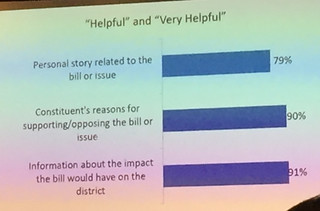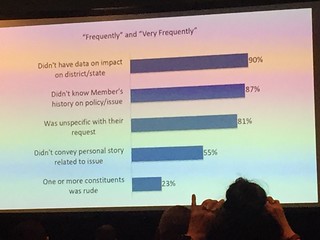Description
Building relationships with elected officials can sometimes be difficult and uncomfortable. It forces you and your key stakeholders to get close to politicians in ways that may feel “prickly” – like hugging a porcupine. This program will help participants overcome that discomfort, revealing the methods and benefits for building relationships with elected officials. Participants will learn: who members of Congress and state legislators listen to; what congressional staffers believe are the most effective communications tactics for influencing undecided Members of Congress; and how to conduct effective in‐person meetings, influence legislators at town hall meetings, as well as effective advocacy in the state/district.
Summary
I want to note that early in his presentation, Fitch recommended the documentary The Congress, which was released by Ken Burns in 1999. Clips from the documentary are available for free, with the entire documentary available for purchase. This documentary provides the history of Congress, which most people know little about.
Fitch, who has been a Congressional aide, gave us a valuable lesson on advocating with our elected officials. We tend to think that an official needs to hear from many people, in order to be spurred to action, but that is not true. Often just hearing from 10-30 people is enough, especially if those people personalize their communication, and connect themselves and their stories to the issue.
Note bene: The photos below are of slides Fitch used during his presentation. The background on the slides was white, but when I photographed them, the background displayed in a rainbow color. I don't know why it happened, but I do like the result.
As the slide above shows, in-person visits from constituents provides the most influence, followed by contact from constituents' representatives, individualized email messages, and a visit from a lobbyist. What provides the least influence is what we often do and that is a form email message. Those form email messages, which many organizations have us do, have the least amount of effect.
This slide notes that a personal story related to the bill or issue is rated as "helpful" or "very helpful" by 79% of politicians and their staffers surveyed. When a constituent provide a reason for supporting or opposing a bill or issue, that is seen as "helpful" or "very helpful" by 90% of respondents. Information about the impact the bill will have on their Congressional member's district was rated as "helpful" or "very helpful" by 91% of respondents.
So what is unhelpful? As the slide above shows, it is unhelpful when the constituent:
- Didn't have data on impact on the person's district or state
- Didn't know the Congressional member's history on the policy or issue
- Was unspecific with their request
- Didn't convey a personal story related to the issue
- Was rude
- Begin with the end in mind. In other words, know what you hope to achieve.
- Set the stage for your story. This could be a brief introduction.
- Paint a picture or, in other words, tell a personal story related to the issue or policy.
- Describe the fight or conflict related to this issue or policy.
- Include a surprise.
- Introduce the potential for success and joy. What will happen if this issue or policy is addressed in the manner that you are advocating for?
- Finish with a hook.
Due to Brad Fitch's work in DC, this was a valuable and well-thought out presentation. I clearly could not capture all of the information he provided. Luckily, his organization has useful information on its website (Communicating with Congress), where we can continue our learning.
By the way, the ALA Cognotes publication had a story on this session. It is on page 12 in the June 24 issue.
Learn from Others
We are fortunate that there are library advocates in our midst, who are willing to train us as well as spearhead advocacy efforts. Among them are Libby Post, John Chrastka and Patrick Sweeney, and ALA. It is likely that your regional or state library association (e.g.. NYLA) also provides help with and training for advocacy. In other words, if advocating for your library or cultural heritage institution is new to you, there is someplace where you can learn more about what to do, as well as people who can help.



No comments:
Post a Comment